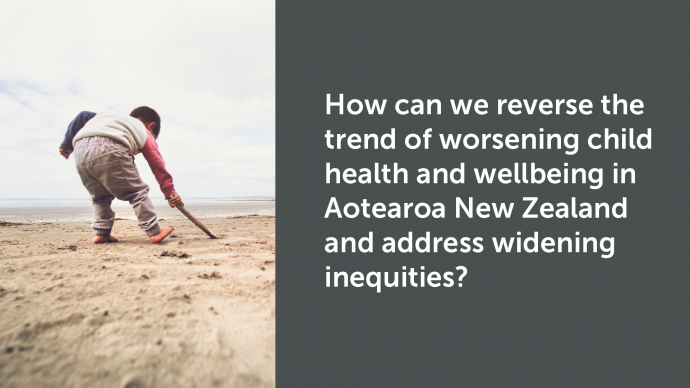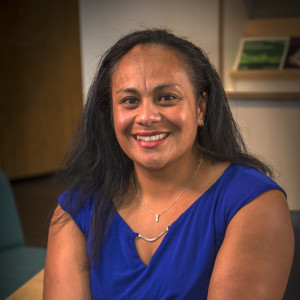Expert perspective: Professor Riz Firestone

Professor Riz Tupai-Firestone, an expert in public health, particularly for Pacific peoples, says we will need innovative and culturally-responsive strategies to address the many determinants of poor child health.
Aotearoa New Zealand continues to witness worrying trends in child health and wellbeing, with several indicators worsening and significant inequities emerging. While most children in New Zealand enjoy good health, outcomes for some compare unfavourably to those for children in other wealthy countries. Child health is shaped by a constellation of interrelated factors. Some of these factors include poor nutrition, restricted physical activity, and low access to and use of New Zealand’s universal healthcare system.
Underlying these inequities are broader socioeconomic and cultural determinants – systemic issues that perpetuate poor educational and health outcomes. Socioeconomic deprivation and crowded or damp housing weaken child health, contributing to high rates of infectious and respiratory illnesses, particularly for Māori and Pacific children. Addressing these determinants requires a holistic collective approach to enhancing child health and wellbeing, as well as, identifying innovative ways to improve health systems to serve New Zealand children better. To turn the tide, evidence-based interventions and new ideas for systems-change are needed.
My own research has shown the effectiveness of community-led and co-designed programmes to create family-centred initiatives that are inclusive of the whole family, not just centred on the individual child. For example, a co-designed programme with Pasifika communities resulted in children and their families leading a healthy-lifestyles programme that directly improved health outcomes for both the child and their family and indirectly paved the way towards a career in community health for family members.
Changes to policies and systems are equally crucial. Universal child health services need to be extended to reach all children. Resources could be allocated in proportion to need, reducing poverty, supporting healthy housing and nutrition, and improving access to primary care and screening in low-income and rural-based communities that have high needs. However, we need to have more innovative ideas to make this happen. Partnerships with social and business enterprises in co-designing and delivering services could help to reform structures that have historically marginalised high-risk children. Ideas from other perspectives (e.g. a te Ao Māori worldview) that have been shown to work could be integrated into health and education systems to improve trust in health services and grow their effectiveness. We can’t keep renovating old ideas as being new ideas.
Finally, robust monitoring of child wellbeing is needed. To avoid widening inequity, we must track and define wellbeing in ways that are culturally acceptable, universal, and recognise what makes children flourish. Reversing current trends will require sustained commitment to equity by treating child health disparities as a human right, with any disparity seen as avoidable, unjust, and unfair. We must be willing to transform current health and social systems in new and different ways.
This holistic, innovative, evidence-based, and culturally grounded approach offers the best hope to improve child health and wellbeing and close the gap for all children in the years ahead."
Published August 2025
 Ridvan (Riz) Tupai-Firestone is a Professor in Public and Pacific Health at Massey University’s Centre for Public Health Research. Her research focuses on social and cultural determinants of health inequalities, specifically among young Pasifika people with non-communicable diseases in New Zealand. She also co-develops community-based interventions with Pasifika communities. Outside of academic life, she has a passion for empowering others in healthier lifestyles through her group fitness career at one of New Zealand’s largest gyms.
Ridvan (Riz) Tupai-Firestone is a Professor in Public and Pacific Health at Massey University’s Centre for Public Health Research. Her research focuses on social and cultural determinants of health inequalities, specifically among young Pasifika people with non-communicable diseases in New Zealand. She also co-develops community-based interventions with Pasifika communities. Outside of academic life, she has a passion for empowering others in healthier lifestyles through her group fitness career at one of New Zealand’s largest gyms.
